42 results
Common Core HSN-Q.A.3 resources for Microsoft Word
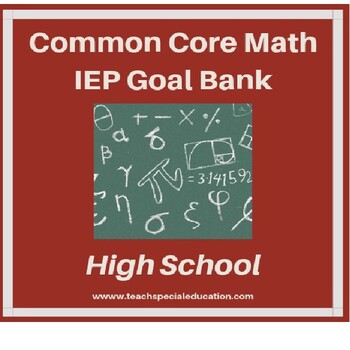
High School Math Common Core Aligned IEP Goal Bank
This IEP goal bank was created to assist special education teachers with the task of writing standards-based IEP goals in math. After spending countless hours developing IEP goals myself and really having to think through how to best individualize goals and objectives for my own students, I wanted to share this resource to help other special education teachers gain back some of their time.This goal bank includes the following:An introduction and guide that explains how to use the document.Each s
Subjects:
Grades:
9th - 12th
CCSS:

Math Placement Exam Review
Math Placement Exam Review
The placement exam is designed to test a student’s knowledge of High School-Level material that is essential to success in MATH. A score of 70% or higher is required to pass the test. Students who score less than 70% will be moved to a section of Basic MATH.
It contains 34 Math questions.
It is 6 pages.
This is a great way to help students review for the PARCC Test.
My Quizzes:
4th Grade Word Problems Quiz (10 Q)
Equations and Inequalities Quiz (20 Question
Subjects:
Grades:
10th - 12th, Higher Education, Adult Education
Types:
CCSS:
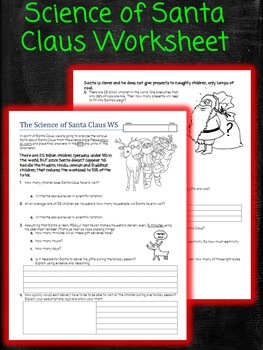
Science of Santa Claus Worksheet
This a hilarious worksheet designed for student to practice their problem solving and math skills. Just look at the two preview questions.
Perfect for that last school day before the winter or Christmas holiday break. Reviews concepts: percent, rate, dimentional analysis, heat transfer, time calculations.
Allows students to practice their Common Core Math Skills!
Works great for both math and science classes.
Besides, who wouldn't want to do some real math on whether Santa Clause is real.
Grades:
7th - 12th
Types:
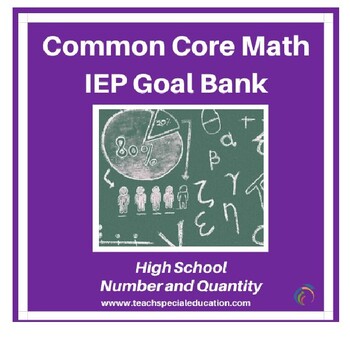
High School Math IEP Goal Bank - Numbers and Quantity
This IEP goal bank was created to assist special education teachers with the task of writing standards-based IEP goals in math. After spending countless hours developing IEP goals myself and really having to think through how to best individualize goals and objectives for my own students, I wanted to share this resource to help other special education teachers gain back some of their time.This goal bank includes the following:An introduction and guide that explains how to use the document.Each s
Grades:
9th - 12th
CCSS:
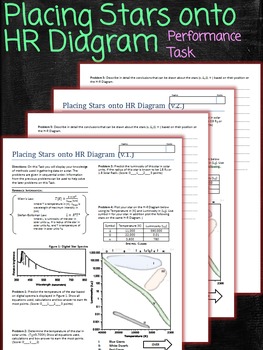
Placing Stars onto H-R Diagram Performance Task
On this task students will display your knowledge of methods used in gathering data on a star. The problems are given in sequential order. Information from the previous problems can be used to help solve the later problems on this task. Students will read infromation from a spectra of a star. Calculate temperature using Weins Law. Calculate the luminosity using Stefan-Boltzman Law and finally place the star on the Hertzsprung-Russel Diagram. Math CC.6.EE Apply and extend previous understandings
Subjects:
Grades:
9th - 12th, Higher Education, Adult Education
Types:
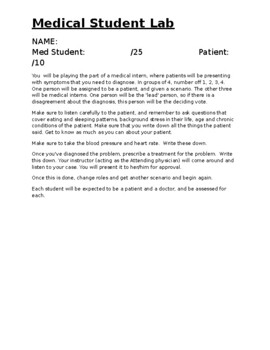
Medical Lab
Students will use previous knowledge in the three key systems (Digestive, Respiratory, Circulatory) and background in additional systems (Nervous, Skeletal, Immune) to diagnose patients based on the case studies presented here. In groups of 3-5, one student will play a 'patient' and present a case of some illness and patient background. Another student, acting as the primary physician will diagnose him/her based on the information provided. The other student(s) will provide support, and along w

Math for Inquiring Minds
Math for Inquiring Minds is a math problem-solving book containing 125 problems for middle school to high school students. The problems are great for warm-ups, worksheets and assessments. The book includes a detailed solutions manual with searchable topics. Criteria for the problems: 1. The problem could very easily occur in the real world naturally or be set up easily. 2. It is a math question a student may have pondered on their own. 3. A student would find the solution to the problem ma
Subjects:
Grades:
6th - 12th
Types:
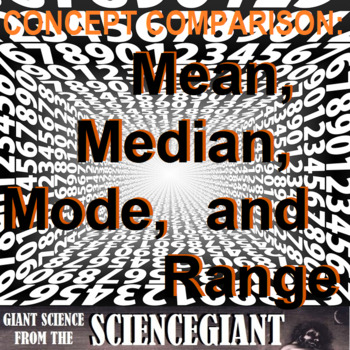
Concept Comparison Frame: Mean, Median, Mode and Range
Students of STEM subjects use many math tools to evaluate data. This concept comparison helps Ss understand how asking to take an average might mean taking the mean...or the median...or the mode...or none of them but the average is on the line of best fit. This activity reinforces estimating, plotting and graphing, mean, median, and mode. It can be extended to include calculating fractions and percentages.Also included is M&M Math: Candy Counting and Graphing of Mean, Mode, Median, and Range
Grades:
7th - 12th
NGSS:
HS-ESS3-2
, HS-PS4-5

Question Exploration: How Much Does 1+1= In Significant Digits?
How much does 1+1? It can depend on significant digits. This concept comparison contrasts accuracy and precision in measurement, and the question exploration explains how to use all the significant figure rules to make measurements, as well as how to round to the right number of sig figs when using scientific notation. Question Exploration Routine is an instructional methods that teachers can use to help a diverse student population understand a body of content information by carefully answering
Subjects:
Grades:
9th - 12th, Higher Education
Also included in: StayGiant Physics Bundle: Measurement
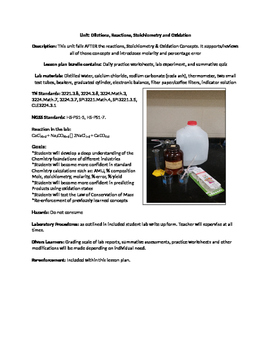
Unit: Stoichiometry of Solutions and Concentrations
This is a full unit, includes review sheets on Molarity and molality designed for homebound students (easily self directed), a lab experiment with an alternate assignment, and 4 versions of a summative quiz. This Unit is designed to fall AFTER Stoichiometry, Nomenclature, types of chemical reactions and oxidation states. It allows for review of all of those concepts. Answer keys are all included.
The lab experiment requires: distilled water, soda ash, calcium chloride, test tubes, test tube ra
Subjects:
Grades:
9th - 12th, Higher Education
Types:
CCSS:
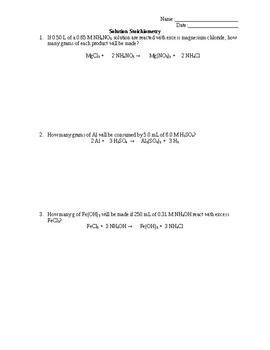
Solution Stoichiometry Worksheet
This worksheet helps reinforce concepts from the Solution Stoichiometry PowerPoint. This is the fifth worksheet in the scale factor method series. The worksheet can be used with any stoichiometry method, but the answer key shows how to answer the questions using the scale factor approach.The scale factor method is an innovative and intuitive approach to solving stoichiometry problems. Students using this method learn to solve problems much more quickly and successfully than when using dimensiona
Subjects:
Grades:
9th - 12th, Higher Education
Types:
NGSS:
HS-PS1-7
Also included in: Solution Stoichiometry Bundle
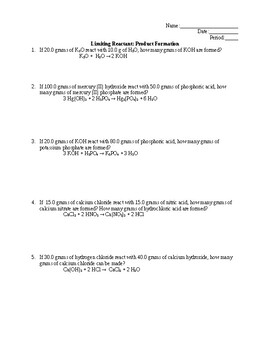
Limiting and Excess Reactant Worksheet
This worksheet helps reinforce concepts from the Limiting and Excess Reactants PowerPoint. This is the fourth worksheet in the scale factor method series. The worksheet can be used with any stoichiometry method, but the answer key shows how to answer the questions using the scale factor approach.The scale factor method is an innovative and intuitive approach to solving stoichiometry problems. Students using this method learn to solve problems much more quickly and successfully than when using di
Subjects:
Grades:
9th - 12th, Higher Education
Types:
NGSS:
HS-PS1-7
Also included in: Limiting and Excess Reactants Bundle

Measurement Activity
This activity can be used for any level of measurement skills. Specific cut out rulers included!!In chemistry, we use this activity to practice reading equipment to the correct number of significant figures. This activity also allows for students to practice their knowledge of laboratory equipment.
Subjects:
Grades:
8th - 12th
Types:
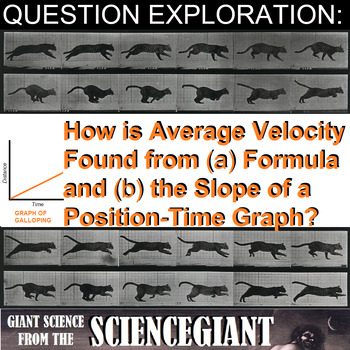
Question Exploration: Solve Average Velocity from a Position-Time Graph
How is average velocity calculated from a position-time graph? This question exploration explains how average velocity can be found as the slope of a displacement-time graph, and gives physics Ss practice solving average velocity as it can be algebraically rearranged into a kinematic equation.Question Exploration Routines are instructional methods that teachers can use to help a diverse student population understand a body of content information by carefully answering a critical question to arri
Subjects:
Grades:
8th - 12th, Higher Education
Also included in: StayGiant Physics Bundle: Kinematics

Composition of a Hydrate Lab
Lab Experiment for Stoichiometry! Want to include a lab experiment that correlates with Stoichiometry? This lab report requires students to directly apply their understanding of Empirical Formula and Percent Composition in a practical way! Students will choose one hydrate to use in the lab procedure. Students will be given the formula of the anhydrous form, but the number of water molecules in the hydrate are unknown. Students will be determining the number of water molecules by heating the hydr
Subjects:
Grades:
11th - 12th
Types:
CCSS:
NGSS:
HS-PS1-7
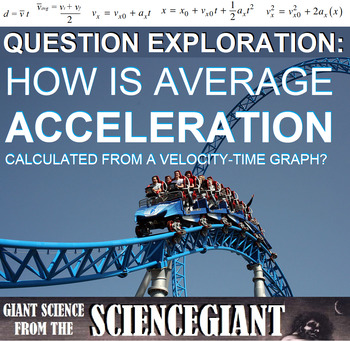
Question Exploration: Solve Average Acceleration from a Velocity-Time Graph
How is average acceleration calculated from a velocity-time graph? This question exploration explains how average acceleration can be found as the slope of a v-t graph, and gives physics Ss practice solving changing velocity as it can be algebraically rearranged into a kinematic equation.Question Exploration Routines are instructional methods that teachers can use to help a diverse student population understand a body of content information by carefully answering a critical question to arrive at
Grades:
9th - 12th, Higher Education
Also included in: StayGiant Physics Bundle: Kinematics
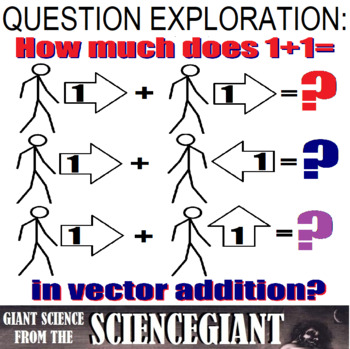
Question Exploration: How Much Does 1+1= In Vector Addition? PART 1
How much does 1+1 equal? 2? 0? 1.414? It depends on how you do vector addition in physics! This question exploration explains definitions, how to distinguish between vectors and scalars, and gives Ss practice adding vectors in one dimension and in two dimensions.Question Exploration Routines are instructional methods that teachers can use to help a diverse student population understand a body of content information by carefully answering a critical question to arrive at a main idea answer. Stude
Subjects:
Grades:
9th - 12th, Higher Education
CCSS:
Also included in: StayGiant Physics Bundle: Measurement

Solution Stoichiometry Bundle
This bundle contains the PowerPoint, worksheet, and key for Solution Stoichiometry using the scale factor method. This is the fifth bundle in the scale factor method series. The worksheet can be used with any stoichiometry method, but the answer key shows how to answer the questions using the scale factor approach.The scale factor method is an innovative and intuitive approach to solving stoichiometry problems. Students using this method learn to solve problems much more quickly and successfully
Subjects:
Grades:
9th - 12th, Higher Education
NGSS:
HS-PS1-7
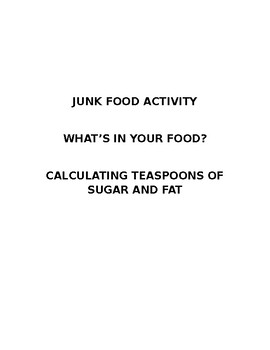
Junk Food Activity
"Whats in your food?" junk food activity is used during a Nutrition unit. Students will have the opportunity to calculate how many teaspoons of fat are in common foods that they eat. With this hands-on activity students can visually see the amount of fat and sugar in their foods using real sugar and Crisco as fat. At the bottom of the document, the directions are translated in Spanish for English Language Learners.
Grades:
6th - 12th
Types:

Rate Problems Homework
This product comes with a homework including one-step, two-step, and multi-step rate problems. It also comes with a unit conversion chart and an answer key.

Percent Yield Bundle
This bundle contains the Percent Yield PowerPoint, as well as two accompanying worksheets and answer keys. One worksheet is mass only, while the second involves solution stoichiometry. This is the sixth bundle in the scale factor method series. The worksheets can be used with any stoichiometry method, but the answer key shows how to answer the questions using the scale factor approach.The scale factor method is an innovative and intuitive approach to solving stoichiometry problems. Students usin
Subjects:
Grades:
9th - 12th, Higher Education
NGSS:
HS-PS1-7
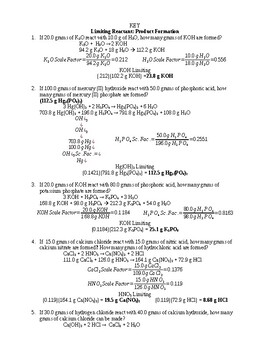
Limiting and Excess Reactants Worksheet Key
This key for the Limiting and Excess Reactants PowerPoint. This is the fourth worksheet in the scale factor method series. The worksheet can be used with any stoichiometry method, but the answer key shows how to answer the questions using the scale factor approach.The scale factor method is an innovative and intuitive approach to solving stoichiometry problems. Students using this method learn to solve problems much more quickly and successfully than when using dimensional analysis. Once you hav
Subjects:
Grades:
9th - 12th, Higher Education
Types:
NGSS:
HS-PS1-7
Also included in: Limiting and Excess Reactants Bundle
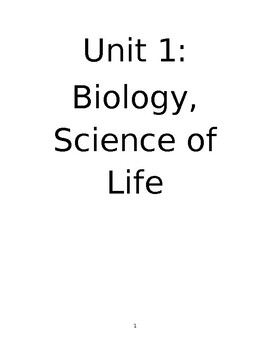
Unit 1 Biology Lesson Workbook (Reading graphs, charts, and tables)
This Unit 1 Biology workbook is for the students to fill out during lecture and during lab activities. It is meant to be an all in one packet for the Unit. The students turn this in the day of their test and it has a rubric scoring form in the front. The answer keys are not available with this, but come separately.
Grades:
9th - 10th
Types:

Scale Factor Extensions Bundle
This bundle contains the Scale Factor Extensions PowerPoint, worksheet, and accompanying key. This is the seventh bundle in the scale factor method series. It requires calculating gas volumes generated and numbers of particles formed. Excess reactants are clearly defined--students do not need to know the concept of limiting reactant to do this worksheet. The worksheet can be solved using any stoichiometry method, but the key shows how to solve using the scale factor method.The scale factor metho
Subjects:
Grades:
9th - 12th, Higher Education
NGSS:
HS-PS1-7
Showing 1-24 of 42 results

